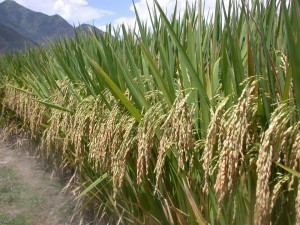Click here for the latest from our friends at the International Society for Cow Protection (ISCOWP)
Author Archives: Club 108
ISCOWP September 2013 update
The Garden of Seven Gates at The Small Farm Training Center
→ The Yoga of Ecology
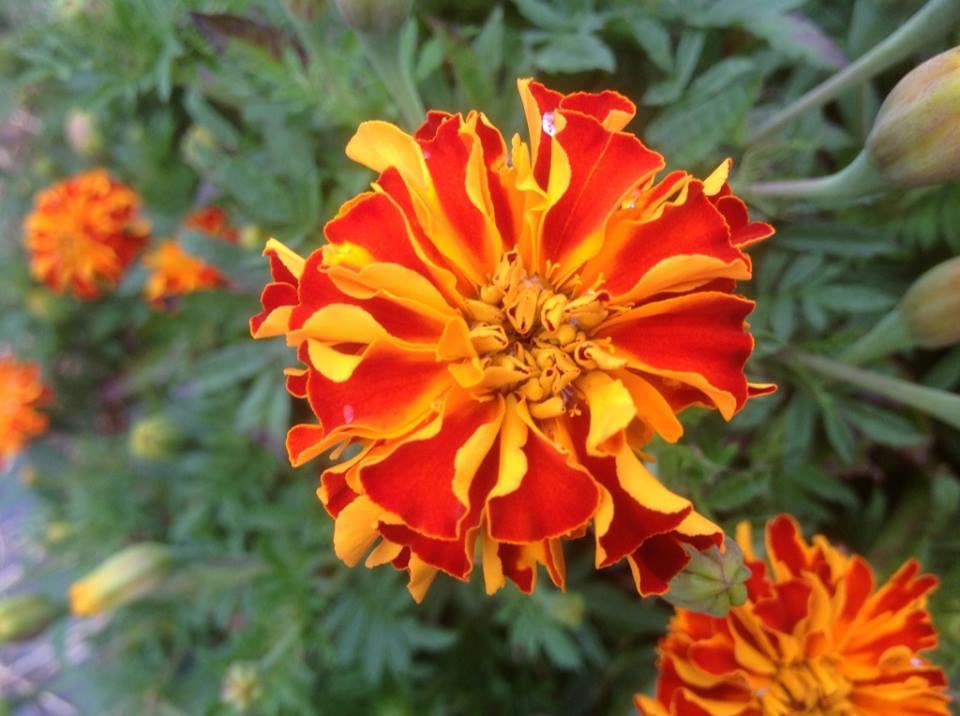
“There exists a deep ecological tradition in Vedic culture by which human settlement, forests and water resources are carefully balanced. To achieve that balance, nature’s welfare and human welfare cannot be separated each other. For this reason Vedic ecology teaches that the earth and the cow are to be loved and cared for as mothers. As such, culture — including the cultivating of land for crops — is an outward expression of spirituality. As a painting expresses the spirit of the artist, culture expresses the spirit of society. Vedic culture has lasted for many thousands of years and is still visible even today. It’s a way of life that’s lasts forever, is self perpetuating and regenerating.”
“Whether you’re reading the sagacious words of Wendell Berry, or the biting commentary of Vandana Shiva, their conclusions are the same: The skills, aptitudes and attitudes that were necessary to industrialize the Earth are not the same as those that are needed now to heal the Earth, or to build durable economies and good communities.
We agree wholeheartedly… but our analysis goes one layer deeper to include the spiritual dimension. Without recognizing the role spirituality has traditionally played in preserving our planet’s delicate web of life, we’re easily tricked into believing that secular science will come-up with a green techno-fix to save the day. It’s those brainy scientist types, not the sages of yore who deserve our veneration, so goes conventional thought.If Western education has driven the planet to a point of crises, what is wrong with that education? And secondly, can any current Western educational institution — whether it’s orientation is secular or Judeo-Christian — identify what’s gone wrong and offer courageous or inspired leadership?What’s needed is not more education but education tempered with wisdom–education the teaches the value of local, the interconnectedness of everything, cooperation over competition and conscience over efficiency. Let’s do an about-face. Is there a model that can dismantle the scaffolding of ideas, philosophies and ideologies that constitutes the modern world view? Let’s look to the East.”
Eight core tenets of sustainable development, including cow protection, vegetarianism, understanding of karma, understanding the myths of modern education, and devotion to food independence, are the foundation of the SFTC. It is these tenets at the heart of Terry’s vision of “no-harm” farming and the real understanding of sustainability.
“No-Harm Mini-Farms will focus on food varieties that stress plant-based diets and plant-based protein sources, including milk from a resurgent family-owned dairy industry. Domesticated farm animals-especially cows-will reappear as welcomed additions to the rural and urban landscape. Animals will be protected and valued as co-authors in the revival of cereal grain production and soil fertility renewal.”
“The real future of this whole thing is village life, where we develop ways to communicate and entertain and grow our own food, raise our children, educate, that is so location specific that it works. You develop loving, interdependent relationships with people, mutually interdependent relationships. That’s our background actually. That’s where were all actually coming from. That’s what we’re all looking for.
Defining relationships in this universe that are not competitive. They’re cooperative. They’re interdependent.The fact is that we’re divine in origin. We are spirit souls. We are not bodies. We need a farming system and a philosophy that drives that farming system that recognizes the position of the soul and revers it as sacred. You’re not completely non-violent, but it means how and when that violence is enacted. Its done very carefully.Beyond being vegetarian is making a sacrament of your food, and in the Hare Krishna Movement this is called taking, or honoring prasadam. You re still karmically accountable for vegetables that are killed Its not as severe, but its there. You’re taking life to maintain your life. How do you get out of that? I need to eat, but it always involves taking life. The way out is to make sacrament of the food. To take it from a source that’s acceptable to be offered and the mentality, the consciousness of how you grow it, harvest it, store it, how you cook it, serve it, is done in spiritual consciousness. This is called honoring prasadam.It is honoring the arrangement of nature by which all these things are given to us graciously for our sustenance so we can get on with our real business, which is self-realization.”
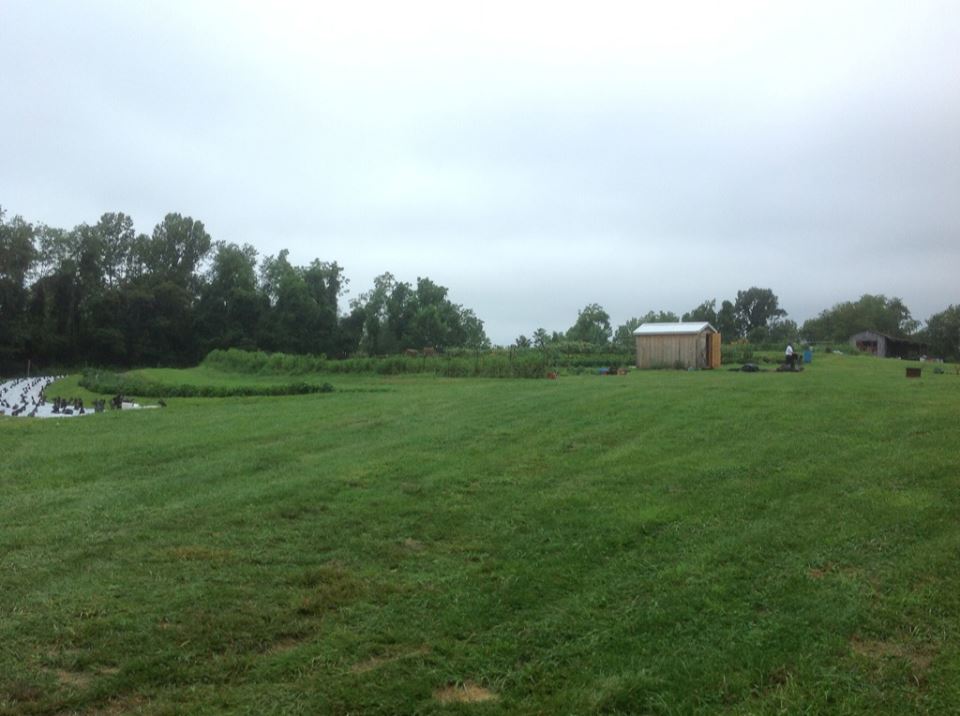
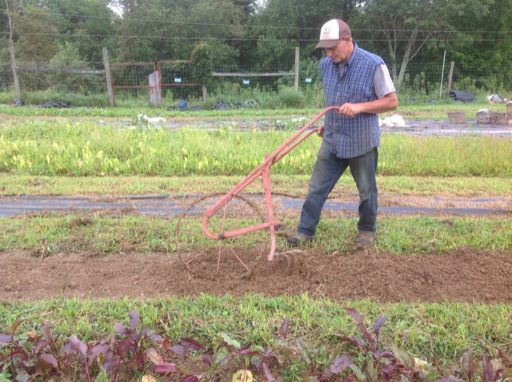
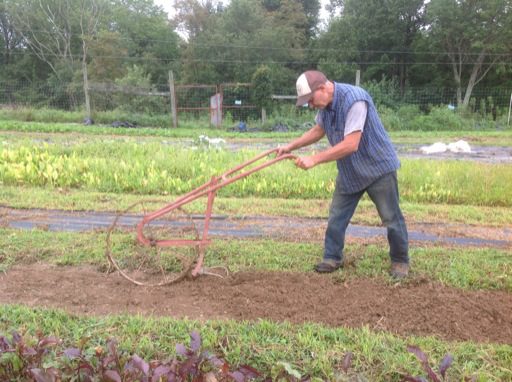
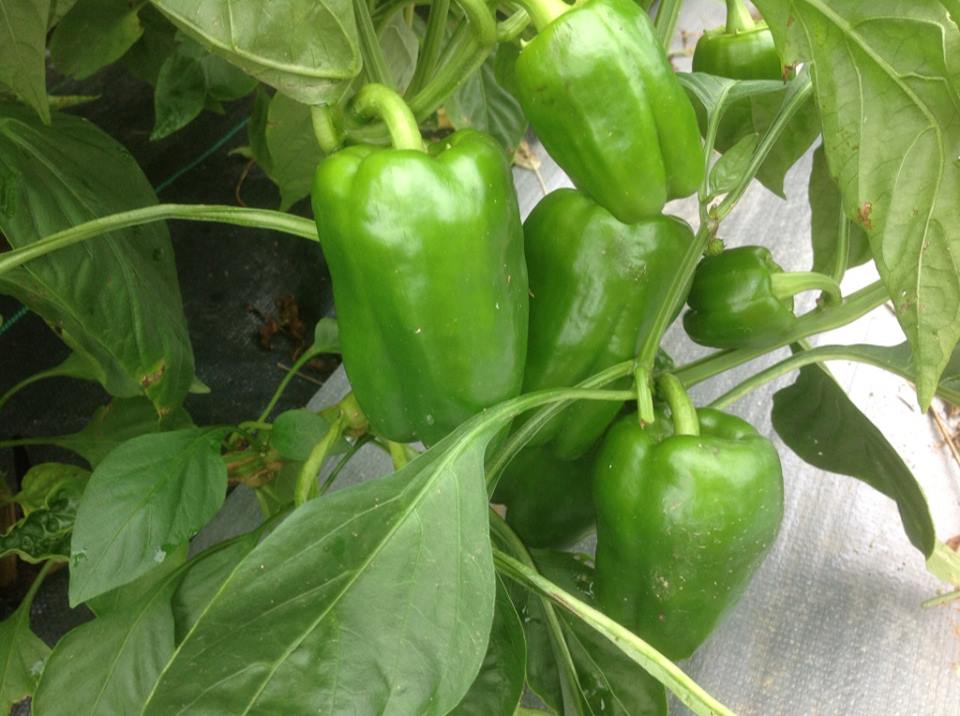
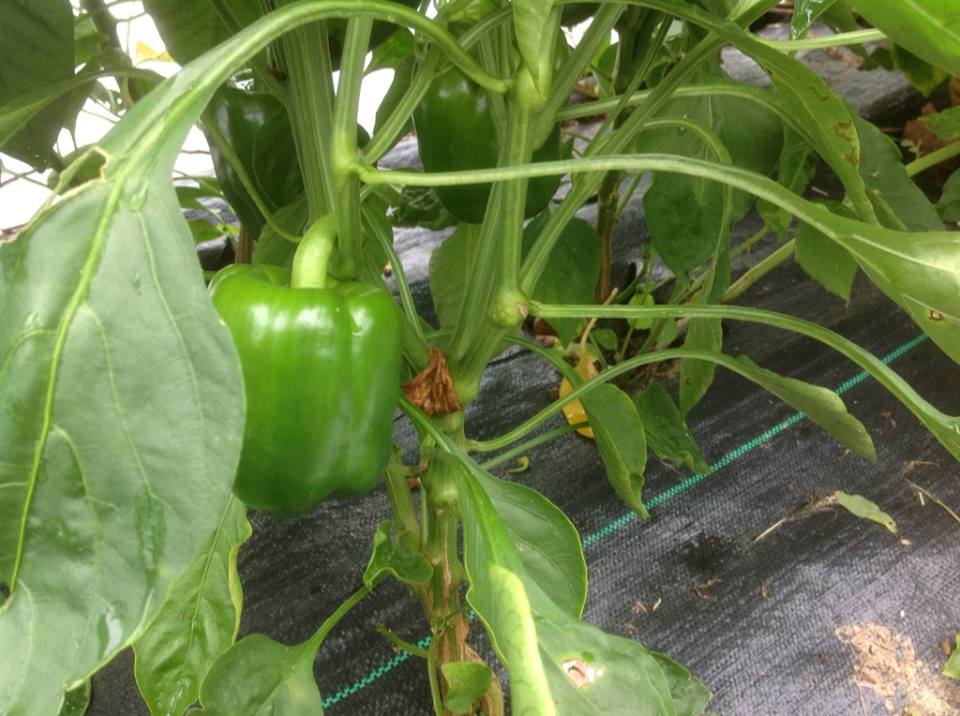 A plethora of fresh green peppers.
A plethora of fresh green peppers.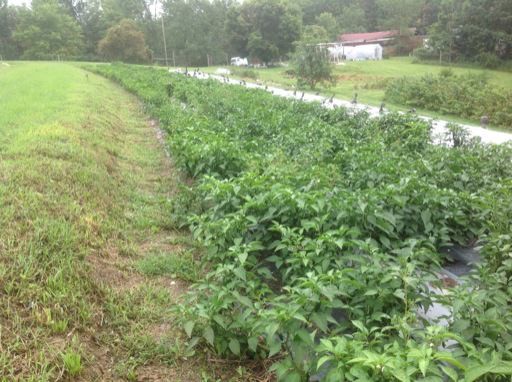 An oceanic bed of deliciously provocative jalapeños.
An oceanic bed of deliciously provocative jalapeños.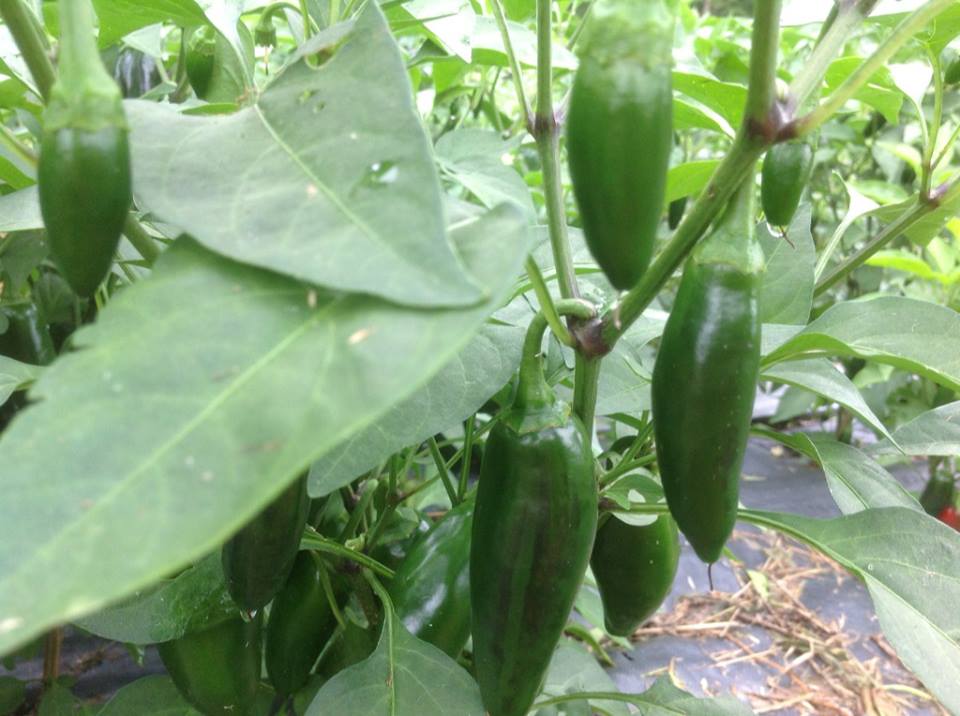
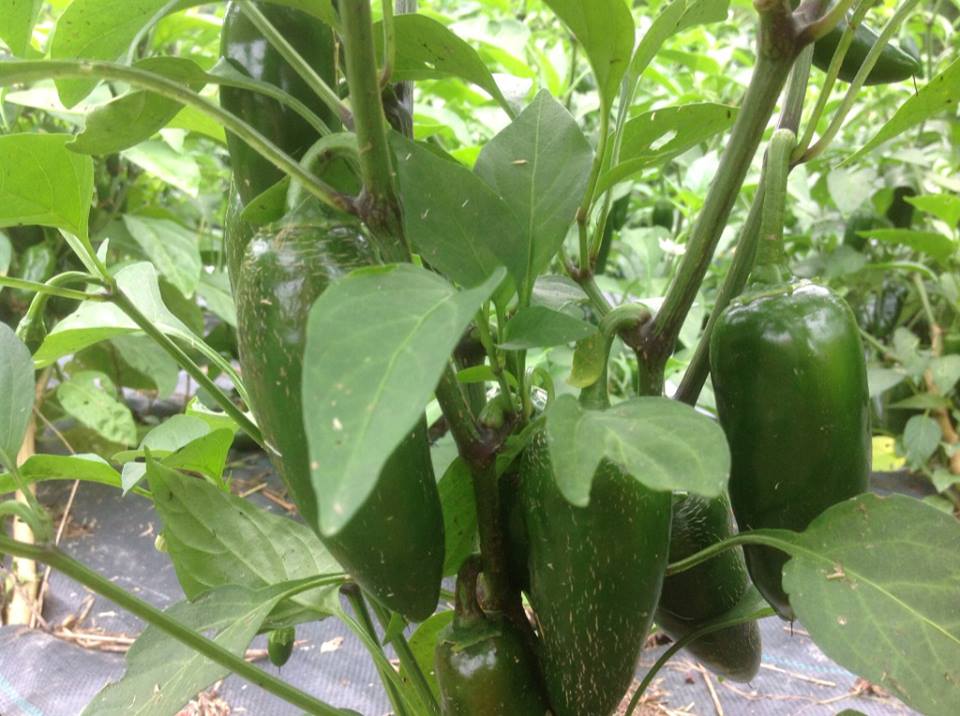
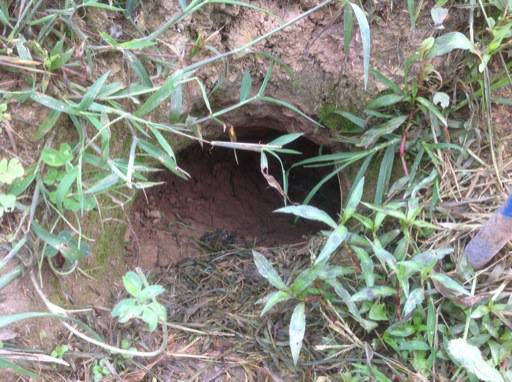
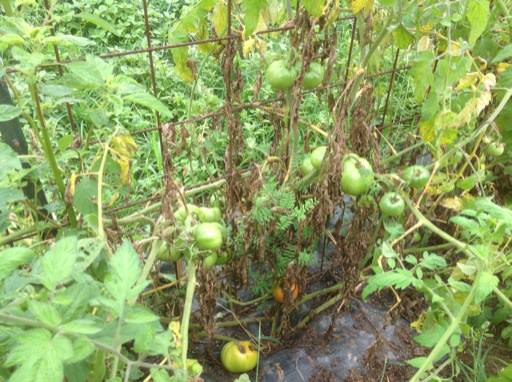 Young tomatoes struggle through a wet and wily season of Appalachian weather to bloom and grow.
Young tomatoes struggle through a wet and wily season of Appalachian weather to bloom and grow.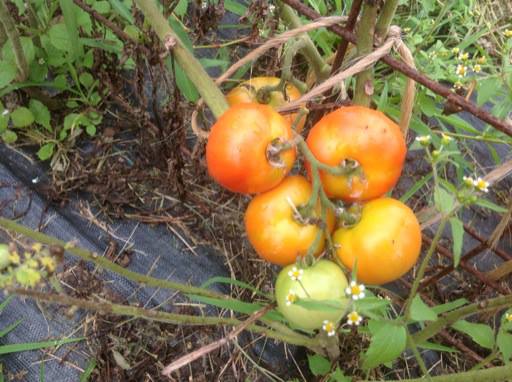
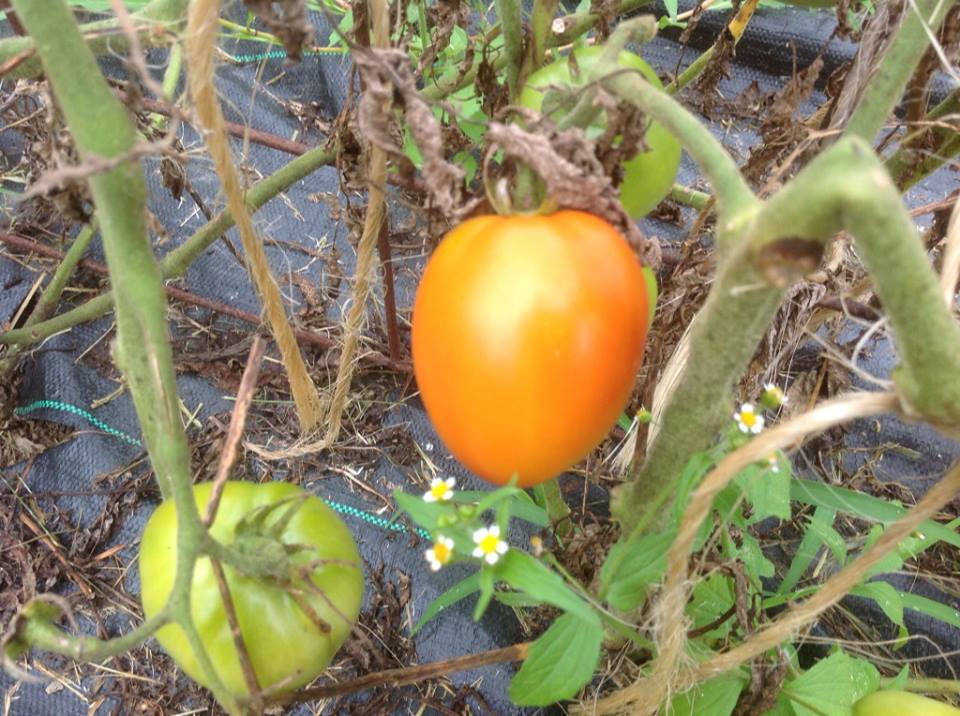
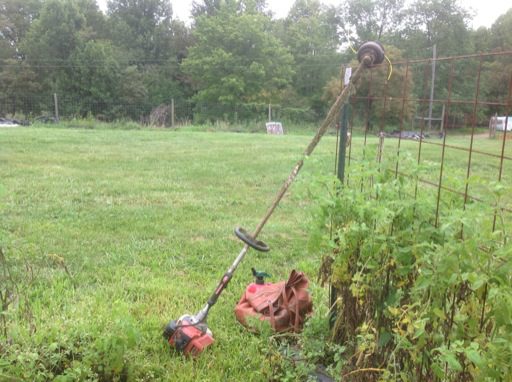 The classic American weed-whacker we endlessly wrestle with so that we may endlessly wrestle with the endless weeds.
The classic American weed-whacker we endlessly wrestle with so that we may endlessly wrestle with the endless weeds.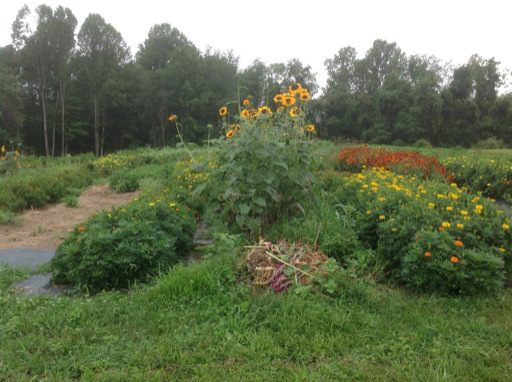 Our flower patch, which is used to sumptuously decorate the altar at the Radha-Krishna temple at the New Vrindaban community.
Our flower patch, which is used to sumptuously decorate the altar at the Radha-Krishna temple at the New Vrindaban community.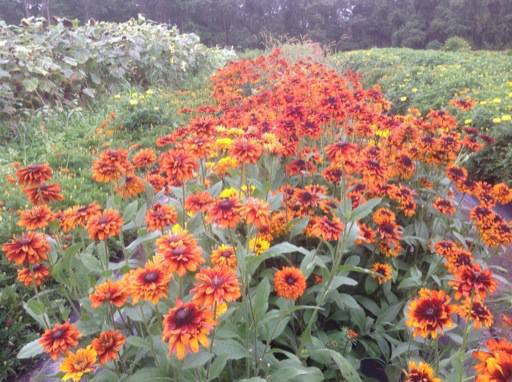
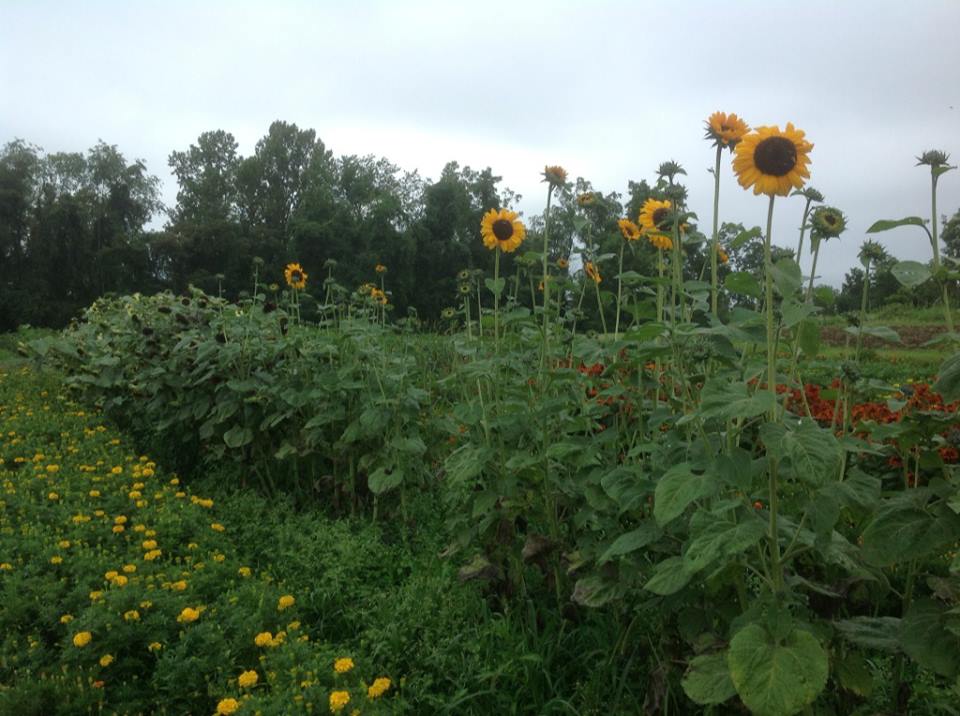
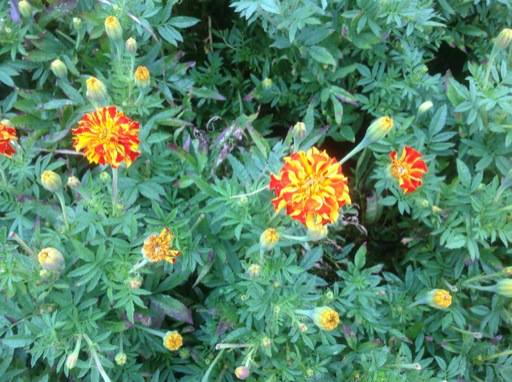
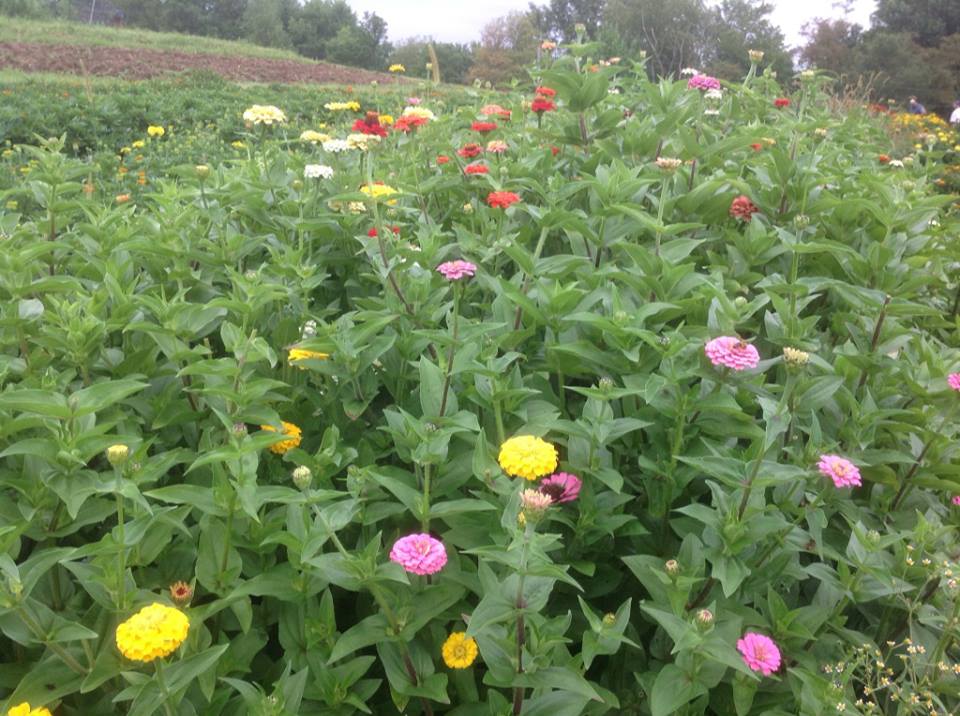
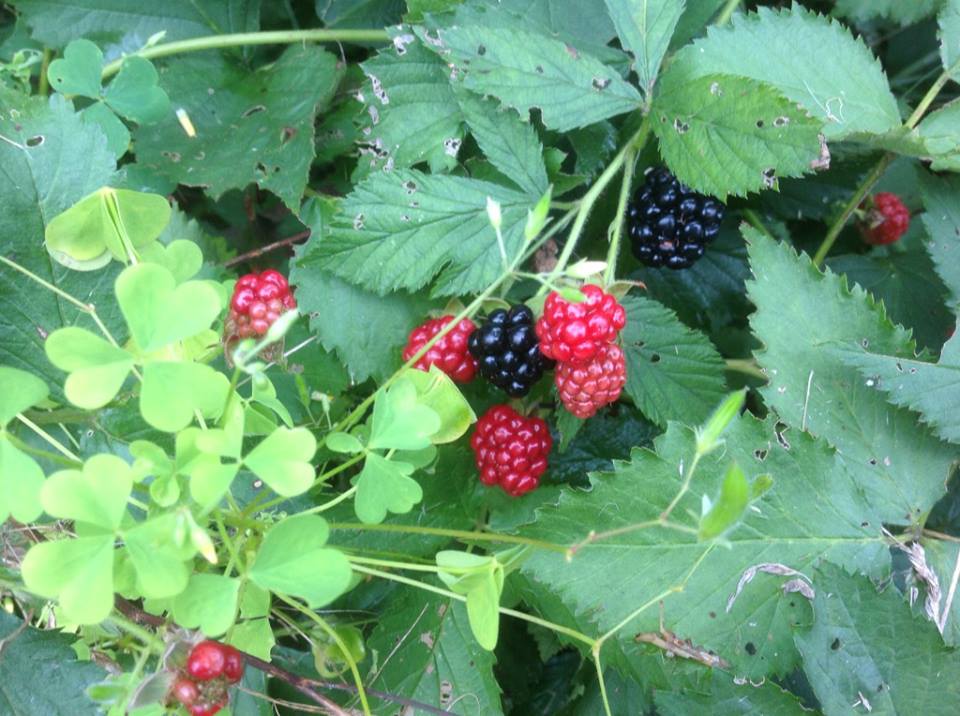 Fresh raspberries showing their colors.
Fresh raspberries showing their colors.
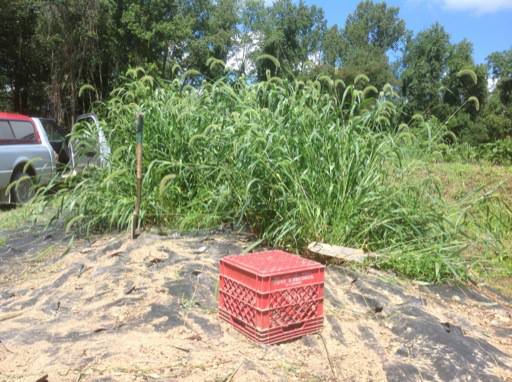
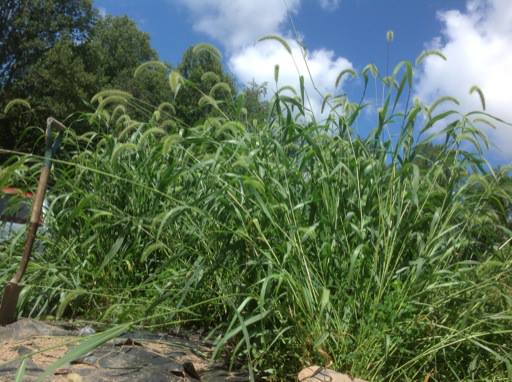
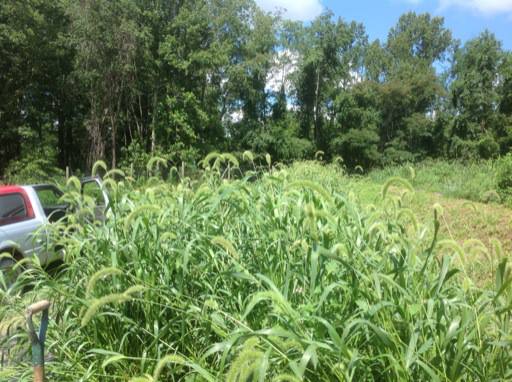
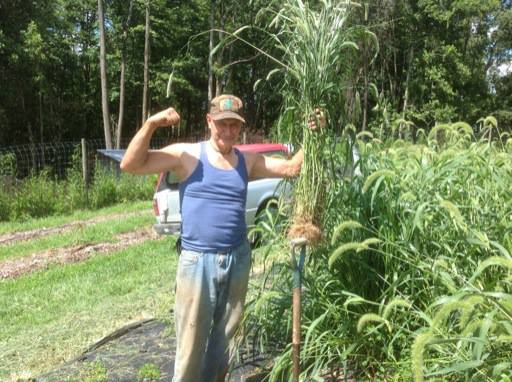 Terry temporarily dominates the mutant-weeds.
Terry temporarily dominates the mutant-weeds.
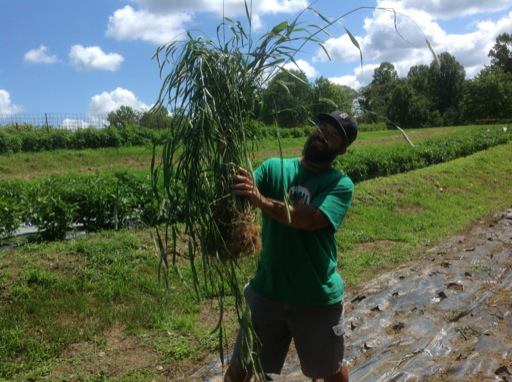
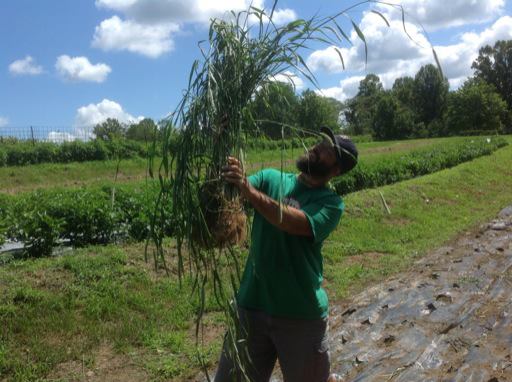
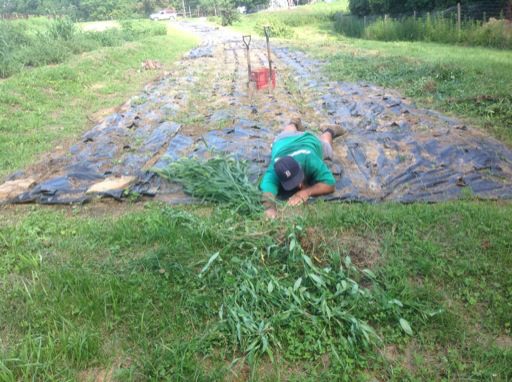 Crossing the rubicon…
Crossing the rubicon…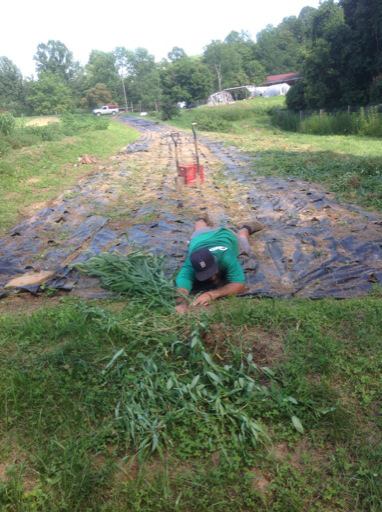
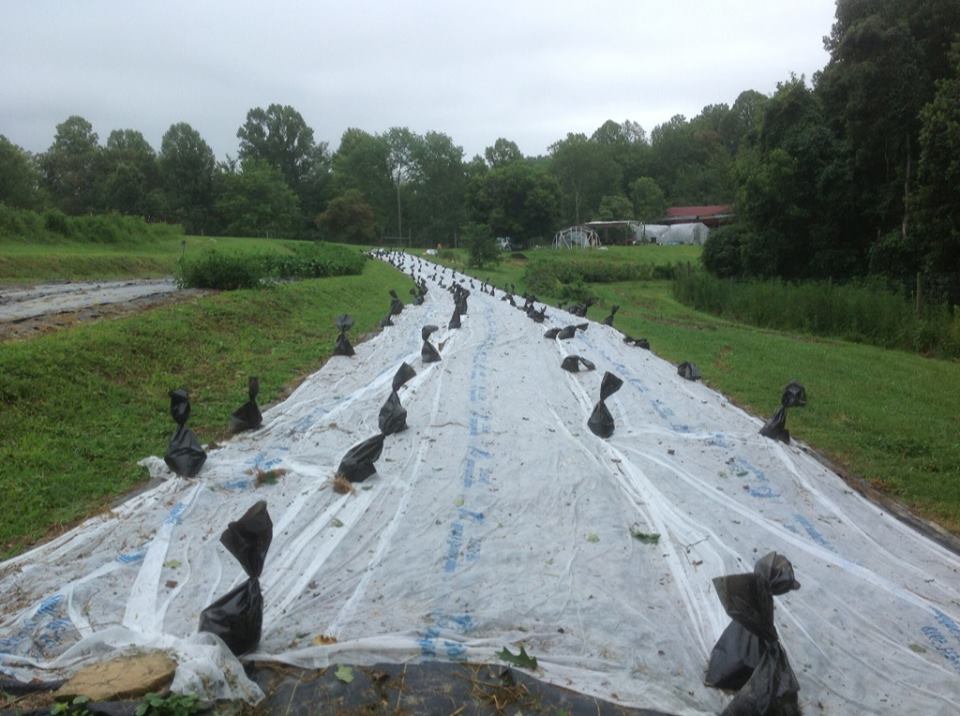
The Teaching Garden at The Small Farm Training Center
→ The Yoga of Ecology
In a previous blog exactly a year ago here on HuffPost, I shared the philosophy of “simple living and high thinking” as presented by the eminent Vedic teacher/scholar A.C Bhaktivedanta Swami Prabhupada. In carrying the timeless wisdom of the …
ISCOWP July 2013 update
→ The Yoga of Ecology
Click here for the latest from our friends at the International Society for Cow Protection (ISCOWP)
A Day In The Life of the Green Wheeling Initiative
→ The Yoga of Ecology
In my previous “Yoga of Ecology” post, I shared the truly brilliant and compassionate work of the Green Wheeling Initiative (GWI), a grassroots ground-up local food movement in Wheeling, W. Va. The GWI is helpi…
The Green Wheeling Initiative
→ The Yoga of Ecology
My hands in the soil eco-theology transcending my nature-deficit-disorder Farm Yatra summer tour continues as I return to a place I called home for two very formative years in my life: the New Vrindaban bhakti-yoga spiritual community, located in the A…
The Green Wheeling Initiative
→ The Yoga of Ecology
My hands in the soil eco-theology transcending my nature-deficit-disorder Farm Yatra summer tour continues as I return to a place I called home for two very formative years in my life: the New Vrindaban bhakti-yoga spiritual community, located in the A…
The Yoga of Ecology: More From Bluestone Farm
→ The Yoga of Ecology
One of the most amazing things that I heard about at our student orientation at Union Theological Seminary last fall was the existence of the “nun farm.” Claire West, a Masters of Divinity student and one of the people behind the Edible Churchyard project at Union, told me about the Bluestone Farm community and the wonderful Sisters who were creating, harvesting, weeding, and living a simple yet grand experiment in spiritually-formed ecologically-sound living in upstate New York.
In my own anticipation to see what the “nun farm” was all about, I began to understand what communities like Bluestone were anticipating. Now, after having spent some actual time with the Sisters, in the dirt and sweat and joy, having left a little piece of my heart at the farm to make sure I return, this anticipation becomes tangible. I am becoming part of a group of seekers, both of the spirit and the land, who are shaping visions of community and civilization as we shift from industrial-technological civilization to ecological civilization.
Bluestone Farm is an anticipatory community, a community that by its very living example is anticipating the coming shape of our communities and civilization, a shape that we hope and work for in such a way that it will be in harmony with the shape of our Mother Earth. We hope, work, and anticipate that this shape of life will not become weakened by a romanticism or an idealism which doesn’t have it’s feet in the ground, its hands in the dirt, or which stands apart or aloof from the concerns of justice, which doesn’t allow the voices of the marginalized, both human and non-human alike, from being heard, honored, and brought to the front.
The deep loving spiritual vision that the Sisters are trying to imbibe and present through their work on the farm is linked to a “new cosmology” of inter-being and inter-spirituality. They explain on their website:
Such a fantastic universe, with its great spiraling galaxies, its supernovas, our solar system, and this privileged planet Earth! All this is held together in the vast curvature of space, poised so precisely in holding all things together in one embrace and yet so lightly that the creative expansion of the universe might continue into the future. We ourselves, with our distinctive capabilities for reflexive thinking, are the most recent wonder of the universe, a special mode of reflecting this larger curvature of the universe itself. If in recent centuries, we have sought to collapse this larger creative curve within the horizons of our own limited being, we must now understand that our own well-being can be achieved only through the well-being of the entire natural world about us. The greater curvature of the universe and of the planet Earth must govern the curvature of our own being…Thomas Berry, The Dream of the Earth
The vision for the future of the Bluestone Farm community as a whole includes an inter-spiritual center that would give space and facility to many different wisdom traditions to give of their hearts and to receive, to add their own seeds to the farm and their own angles of theological vision. The community also anticipates the shape of spirituality as we move into the dynamically uncertain waves of the 21st Century. They want to provide a integrative space for the spiritual and ecological seeker who may not necessarily be inclined to monastic life or other traditional religious and spiritual vocations. Yet it is the strength of the Sisters’ vocation, based in what has worked and open to what will work, and the strength of the community they have built around their vocation, which provides a structure for the 21st Century person willingly or unwillingly immersed in the post-structural and the post-modern.
At the center of it all is the land and the cow and the spirituality of farming. The Sisters write:
The philosophy the Sisters are developing in their work on the farm is based much more than just the obvious, much more than what can only be seen with our eyes or directly perceived by our senses. They have been developing biodynamic methods based on the teachings of Rudolf Steiner. They are convinced, as generations and generations before them, of the miraculous utility of cow manure. In my own small way, in my recovery from nature-deficit disorder, I have begun to develop a set of “soft eyes” which lets me see all the peas or asparagus I need to pick, and all the specific weeds I need to pull. In fact weeding, the eternal art, is a kind of Zen activity if one is able to simply disconnect from the urbanized, carbonized, and digitized whoosh that seems to be blowing like a gale through our minds constantly.
Here again are some images of life at Bluestone Farm which illustrate our values, joy, and abundance
Cow manure, God’s greatest invention
Our worship at Bluestone Farm is like everything else we do, rooted in traditional wisdom but always seeking to integrate the threads of spirituality which we all share in the 21st Century. One of the most unique creations the Sisters have grown is the Celebration of Life eucharist, in which the traditional elements of communion, such as the bread and wine, are exchanged with bounties from the garden, such as fresh blueberries and buttermilk. The liturgy is also geared towards an understanding of the Earth as Eucharist. To whit:
Today we continue to participate in this dance of life, taking in and releasing energy just as our ancestors the first particles learned to do. Our duty and our joy is twofold: to speak the glad celebration of all creation, and to participate in the evolutionary journey of consciousness with mindfulness and awe.
The worship at the Farm is also deeply inter-spiritual. In my time there we took part in a traditional Chinese tea ceremony led by our friends and Community Associates Kay and Anne from New Mexico, and I led a kirtan from the bhakti-yoga tradition of India. The community also incorporates elements of Sufi zikr.
The Yoga of Ecology: More From Bluestone Farm
→ The Yoga of Ecology
One of the most amazing things that I heard about at our student orientation at Union Theological Seminary last fall was the existence of the “nun farm.” Claire West, a Masters of Divinity student and one of the people behind the Edible Churchyard project at Union, told me about the Bluestone Farm community and the wonderful Sisters who were creating, harvesting, weeding, and living a simple yet grand experiment in spiritually-formed ecologically-sound living in upstate New York.
In my own anticipation to see what the “nun farm” was all about, I began to understand what communities like Bluestone were anticipating. Now, after having spent some actual time with the Sisters, in the dirt and sweat and joy, having left a little piece of my heart at the farm to make sure I return, this anticipation becomes tangible. I am becoming part of a group of seekers, both of the spirit and the land, who are shaping visions of community and civilization as we shift from industrial-technological civilization to ecological civilization.
Bluestone Farm is an anticipatory community, a community that by its very living example is anticipating the coming shape of our communities and civilization, a shape that we hope and work for in such a way that it will be in harmony with the shape of our Mother Earth. We hope, work, and anticipate that this shape of life will not become weakened by a romanticism or an idealism which doesn’t have it’s feet in the ground, its hands in the dirt, or which stands apart or aloof from the concerns of justice, which doesn’t allow the voices of the marginalized, both human and non-human alike, from being heard, honored, and brought to the front.
The deep loving spiritual vision that the Sisters are trying to imbibe and present through their work on the farm is linked to a “new cosmology” of inter-being and inter-spirituality. They explain on their website:
Such a fantastic universe, with its great spiraling galaxies, its supernovas, our solar system, and this privileged planet Earth! All this is held together in the vast curvature of space, poised so precisely in holding all things together in one embrace and yet so lightly that the creative expansion of the universe might continue into the future. We ourselves, with our distinctive capabilities for reflexive thinking, are the most recent wonder of the universe, a special mode of reflecting this larger curvature of the universe itself. If in recent centuries, we have sought to collapse this larger creative curve within the horizons of our own limited being, we must now understand that our own well-being can be achieved only through the well-being of the entire natural world about us. The greater curvature of the universe and of the planet Earth must govern the curvature of our own being…Thomas Berry, The Dream of the Earth
The vision for the future of the Bluestone Farm community as a whole includes an inter-spiritual center that would give space and facility to many different wisdom traditions to give of their hearts and to receive, to add their own seeds to the farm and their own angles of theological vision. The community also anticipates the shape of spirituality as we move into the dynamically uncertain waves of the 21st Century. They want to provide a integrative space for the spiritual and ecological seeker who may not necessarily be inclined to monastic life or other traditional religious and spiritual vocations. Yet it is the strength of the Sisters’ vocation, based in what has worked and open to what will work, and the strength of the community they have built around their vocation, which provides a structure for the 21st Century person willingly or unwillingly immersed in the post-structural and the post-modern.
At the center of it all is the land and the cow and the spirituality of farming. The Sisters write:
The philosophy the Sisters are developing in their work on the farm is based much more than just the obvious, much more than what can only be seen with our eyes or directly perceived by our senses. They have been developing biodynamic methods based on the teachings of Rudolf Steiner. They are convinced, as generations and generations before them, of the miraculous utility of cow manure. In my own small way, in my recovery from nature-deficit disorder, I have begun to develop a set of “soft eyes” which lets me see all the peas or asparagus I need to pick, and all the specific weeds I need to pull. In fact weeding, the eternal art, is a kind of Zen activity if one is able to simply disconnect from the urbanized, carbonized, and digitized whoosh that seems to be blowing like a gale through our minds constantly.
Here again are some images of life at Bluestone Farm which illustrate our values, joy, and abundance
Cow manure, God’s greatest invention
Our worship at Bluestone Farm is like everything else we do, rooted in traditional wisdom but always seeking to integrate the threads of spirituality which we all share in the 21st Century. One of the most unique creations the Sisters have grown is the Celebration of Life eucharist, in which the traditional elements of communion, such as the bread and wine, are exchanged with bounties from the garden, such as fresh blueberries and buttermilk. The liturgy is also geared towards an understanding of the Earth as Eucharist. To whit:
Today we continue to participate in this dance of life, taking in and releasing energy just as our ancestors the first particles learned to do. Our duty and our joy is twofold: to speak the glad celebration of all creation, and to participate in the evolutionary journey of consciousness with mindfulness and awe.
The worship at the Farm is also deeply inter-spiritual. In my time there we took part in a traditional Chinese tea ceremony led by our friends and Community Associates Kay and Anne from New Mexico, and I led a kirtan from the bhakti-yoga tradition of India. The community also incorporates elements of Sufi zikr.
The Yoga of Ecology at Bluestone Farm
→ The Yoga of Ecology
The Yoga of Ecology blog originally began in 2008 as a chronicle of the spiritually inspired agricultural exploits of the Small Farm Training Center project at the New Vrindaban bhakti-yoga community in the foothills of the West Virginia…
The Yoga of Ecology at Bluestone Farm
→ The Yoga of Ecology
The Yoga of Ecology blog originally began in 2008 as a chronicle of the spiritually inspired agricultural exploits of the Small Farm Training Center project at the New Vrindaban bhakti-yoga community in the foothills of the West Virginia…
Govardhan Eco-Village Receives IAA Olive Crown Award
→ The Yoga of Ecology
Click here to read the full article from Radhanath Swami’s websiteThe India Chapter of the International Advertising Association (an international body of Media & Advertisers) conducted the Olive Crown Awards for the year 2013 in Mu…
Govardhan Eco-Village Receives IAA Olive Crown Award
→ The Yoga of Ecology
Click here to read the full article from Radhanath Swami’s websiteThe India Chapter of the International Advertising Association (an international body of Media & Advertisers) conducted the Olive Crown Awards for the year 2013 in Mu…
ISCOWP March 2013 Update
→ The Yoga of Ecology
Click here for the latest from our friends at the International Society for Cow Protection (ISCOWP)
ISCOWP March 2013 Update
→ The Yoga of Ecology
Click here for the latest from our friends at the International Society for Cow Protection (ISCOWP)
India’s Rice Revolution
→ The Yoga of Ecology
Click here to read the full article from John Vidal at The Observer “It is a set of ideas, the absolute opposite to the first green revolution [of the 60s] which said that you had to change the genes and the soil nutrients to improve yields. Th…
India’s Rice Revolution
→ The Yoga of Ecology
Click here to read the full article from John Vidal at The Observer “It is a set of ideas, the absolute opposite to the first green revolution [of the 60s] which said that you had to change the genes and the soil nutrients to improve yields. Th…
The Global Farmland Rush
→ The Yoga of Ecology
The Global Farmland Rush
→ The Yoga of Ecology
In Energy Taxes, Tools to Help Tackle Climate Change
→ The Yoga of Ecology
In Energy Taxes, Tools to Help Tackle Climate Change
→ The Yoga of Ecology
ISCOWP Update January 2013
→ The Yoga of Ecology
Click here for the latest from our friends at the International Society for Cow Protection (ISCOWP)
ISCOWP Update January 2013
→ The Yoga of Ecology
Click here for the latest from our friends at the International Society for Cow Protection (ISCOWP)
How High Could the Tide Go?
→ The Yoga of Ecology
How High Could the Tide Go?
→ The Yoga of Ecology
Obama’s Climate Challenge
→ The Yoga of Ecology
Obama’s Climate Challenge
→ The Yoga of Ecology
Photographing Climate Change
→ The Yoga of Ecology
Click here to view the blog/slideshow from our friend Rachelle Klapheke at The New Yorker Climate change is not only a major issue for scientists and politicians but for artists as well. Here are ten examples of photographers and other visual a…
Photographing Climate Change
→ The Yoga of Ecology
Click here to view the blog/slideshow from our friend Rachelle Klapheke at The New Yorker Climate change is not only a major issue for scientists and politicians but for artists as well. Here are ten examples of photographers and other visual a…
Welcome to Saudi Albany?
→ The Yoga of Ecology
Welcome to Saudi Albany?
→ The Yoga of Ecology
Will the West ever solve its water woes?
→ The Yoga of Ecology
Will the West ever solve its water woes?
→ The Yoga of Ecology
5 Takeaways From NOAA’s New Study On Climate Change And Extreme Events
→ The Yoga of Ecology
Click here to read the full article from Kelly Levin at WRI Insights
Many people are understandably perplexed at the U.S.’s recent extreme weather events like record heat waves, torrential downpours, droughts, and wildfires. A new report published by scientists from the National Oceanic and Atmospheric Administration (NOAA) and other institutions may finally offer some insight into climate change’s connection to the damaging and costly extreme events that are on the rise.
5 Takeaways From NOAA’s New Study On Climate Change And Extreme Events
→ The Yoga of Ecology
Click here to read the full article from Kelly Levin at WRI Insights
Many people are understandably perplexed at the U.S.’s recent extreme weather events like record heat waves, torrential downpours, droughts, and wildfires. A new report published by scientists from the National Oceanic and Atmospheric Administration (NOAA) and other institutions may finally offer some insight into climate change’s connection to the damaging and costly extreme events that are on the rise.
How Millions of Farmers are Advancing Agriculture For Themselves
→ The Yoga of Ecology
Click here to read the full article from Jonathan Latham at Independent Science News
The world record yield for paddy rice production is not held by an agricultural research station or by a large-scale farmer from the United States, but by Sumant Kumar who has a farm of just two hectares in Darveshpura village in the state of Bihar in Northern India. His record yield of 22.4 tons per hectare, from a one-acre plot, was achieved with what is known as the System of Rice Intensification (SRI). To put his achievement in perspective, the average paddy yield worldwide is about 4 tons per hectare. Even with the use of fertilizer, average yields are usually not more than 8 tons.
How Millions of Farmers are Advancing Agriculture For Themselves
→ The Yoga of Ecology
Click here to read the full article from Jonathan Latham at Independent Science News
The world record yield for paddy rice production is not held by an agricultural research station or by a large-scale farmer from the United States, but by Sumant Kumar who has a farm of just two hectares in Darveshpura village in the state of Bihar in Northern India. His record yield of 22.4 tons per hectare, from a one-acre plot, was achieved with what is known as the System of Rice Intensification (SRI). To put his achievement in perspective, the average paddy yield worldwide is about 4 tons per hectare. Even with the use of fertilizer, average yields are usually not more than 8 tons.
ISCOWP November 2012 Update
→ The Yoga of Ecology
Click here for the latest from our friends at the International Society for Cow Protection (ISCOWP)
ISCOWP November 2012 Update
→ The Yoga of Ecology
Click here for the latest from our friends at the International Society for Cow Protection (ISCOWP)




























